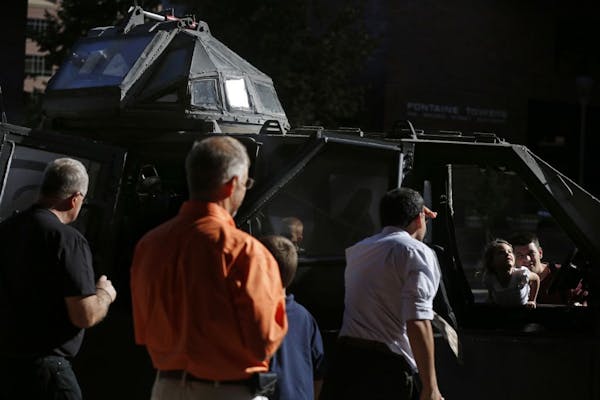What a difference a day makes.
After Tuesday's high heat, low humidity and gusty winds pushed most of the state into fire-danger territory, the near record-breaking temperatures in the Twin Cities were expected to give way Wednesday to fall-like temps near 70 degrees.
The temperature at Minneapolis-St. Paul International Airport hit 95 degrees Tuesday, one degree shy of the 96-degree record set in 1895 and 1931, National Weather Service meteorologist Shawn DeVinny said.
For those keeping count, that makes 31 days this year when the temperature hit 90 or above. Those numbers aren't record-breaking -- 1988 had a record 44 days of 90 degrees or hotter.
The above-normal temperatures, however, are keeping the Twin Cities on track to notch the warmest year on record, which was set in 1931, DeVinny said.
Days of 90 degrees or more, however, may be behind us for the rest of the year.
Temperatures likely will be in the 70s for the rest of the week and possibly hit 80 on Sunday, DeVinny said.
"By mid-September, it's really tough to hit the 90s," he said. "We're going to lose a lot of daylight between now and then, and the lower sun angle makes it tougher to get the radiation from the sun."
As temperatures began to dip Tuesday evening, fire danger alerts were lifted for parts of the state.
Most of the small fires that erupted over the past couple of days were extinguished but firefighters on Tuesday continued to battle a blaze that has blackened about 175 acres east of Red Lake in northern Minnesota, said Jean Goad, spokeswoman for the Minnesota Interagency Fire Center.
A lot of the land is peat, which makes the fire more difficult to put out, she said.
"It will probably be several more days before we get that one under control," Goad said. "It's all just very dry."
The parched landscape has gardeners looking longingly to the skies for rain and St. Paul city officials putting out a call to residents to water not only their trees but the boulevard trees that abut their property.
The dry conditions can stress trees and make them more susceptible to disease, city officials said.
The city's Forestry Division pointed out that signs of stress include leaves that are yellowing, drooping, wilting or dropping prematurely.
One or two rainstorms likely won't make up for the recent lack of rain, forestry officials said in advising residents to water trees.
According to National Weather Service, the Twin Cities area isn't likely to get a lot of rain any time soon.
"The next decent shot of rain might be on Monday," DeVinny said. "But it doesn't look like much. Maybe a quarter of an inch. It won't be a big rainmaker."
Mary Lynn Smith • 612-673-4788

Legendary record store site in Minneapolis will soon house a new shop for musicheads

Former Gov. Jesse Ventura boasts he could beat unpopular Trump or Biden if he ran for president

Dave Kleis says he won't run for sixth term as St. Cloud mayor
Newspaper boxes repurposed as 'Save a Life' naloxone dispensaries

